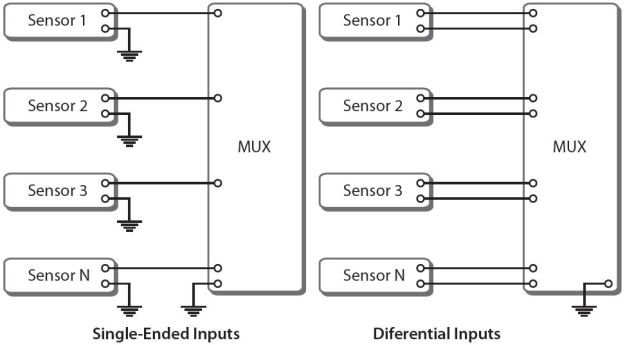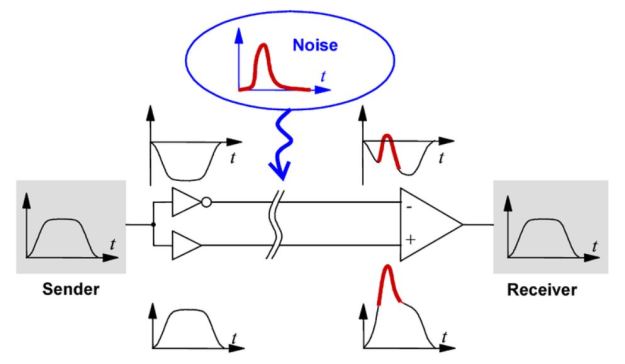Differential inputs offer better noise immunity than single-ended for two reasons. First, much of the noise in a DAQ system is picked up when electromagnetic waves (usually referred to as EMI) in the local environment are coupled into system cables. Keeping the two wires in a differential input in close proximity means both wires are subject to the same EMI. Because the EMI pickup is identical on both wires, it does not show up as a difference in voltage at the two inputs. And since the differential input only measures the voltage difference between the inputs, the EMI is ignored.
The noisier the environment, the more important it is to have differential inputs. Though not a firm rule, at 16-bit resolution or higher, it is usually recommended that you use differential inputs. Most vendors do not offer interfaces with higher than 16-bit resolution in single-ended mode as the noise picked up by the high resolution, single-ended input is almost certain to disappoint the user.
Differential signals also have the advantage that within a limited range (referred to as the Common-Mode Range) they float relative to the DAQ device’s ground. Many, if not most signals connected to a typical analog input come from other ground referenced devices. However, the ground of the signal source is almost never at exactly the same voltage as the ground of the DAQ inputs. A difference in the ground voltage at the DAQ system and at the sensor or signal source is largely ignored by differential inputs, but it creates a tug of war that can “move” the DAQ system ground around enough to cause significant measurement error.
The noise reducing and common-mode rejecting capabilities of a differential input are not entirely “free”. To properly take advantage of a differential input, you must be careful to connect it properly to your signals. In particular, you must pay attention to whether your signal source is isolated from the analog input (at the signal source, at the A/D input or both) or whether the two systems share a common ground reference. (Note that when we say common ground reference, we do not mean they are at the same ground, only that a low impedance connection path exists between the two grounds.)
In Part 2 of this BLOG we will consider two important design cases:
• Connecting to a signal that is isolated from the DAQ input
• Connecting to a signal that shares a common ground reference with the DAQ input


